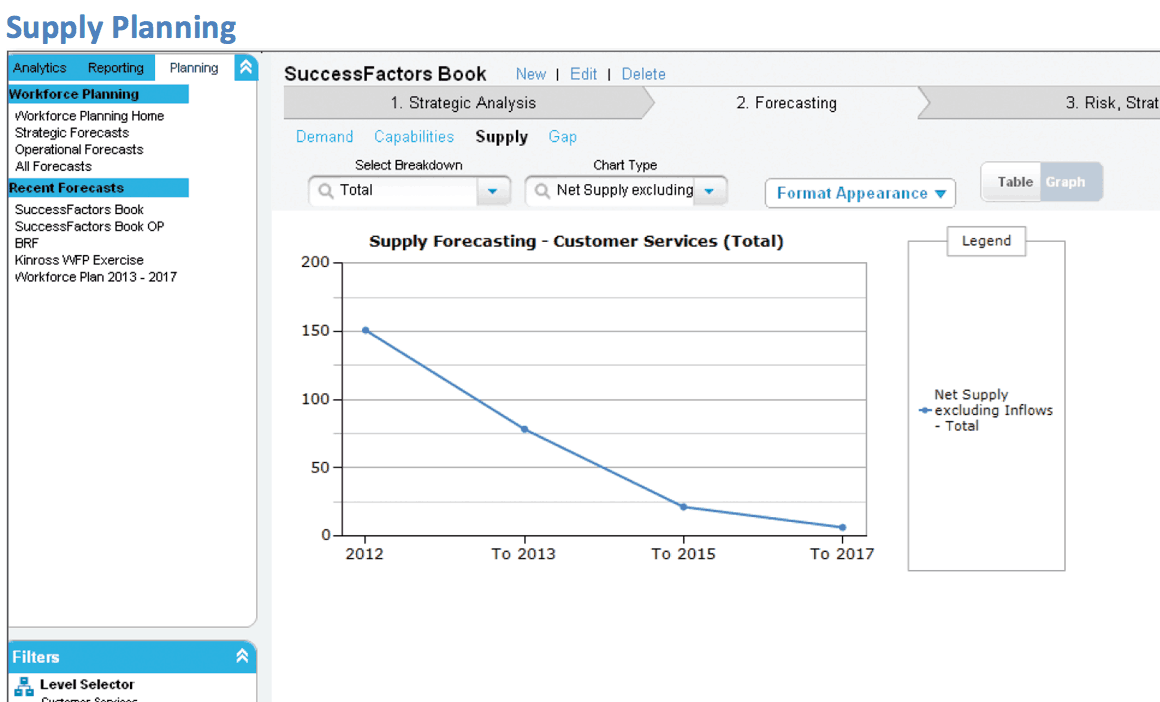How to Understand Forecasting in SAP SuccessFactors
Executive Summary
- We cover the forecasting functionality in SuccessFactors.
- Why the SF forecasting functionality is so interesting and the implications of using it.

Introduction
SuccessFactors is an HR/HCM application. It is a relatively recent acquisition on the part of SAP, a SaaS-based application that was original to be managed as an independent company but has since been moved into SAP’s Cloud Division. It is considered one of SAP’s leading SaaS applications. SuccessFactors could be regarded as a defense acquisition as SAP has been losing deals in the HR/HCM space to WorkDay – even at the upper end.
Our References for This Article
If you want to see our references for this article and other related Brightwork articles, see this link.
Notice of Lack of Financial Bias: We have no financial ties to SAP or any other entity mentioned in this article.
- This is published by a research entity, not some lowbrow entity that is part of the SAP ecosystem.
- Second, no one paid for this article to be written, and it is not pretending to inform you while being rigged to sell you software or consulting services. Unlike nearly every other article you will find from Google on this topic, it has had no input from any company's marketing or sales department. As you are reading this article, consider how rare this is. The vast majority of information on the Internet on SAP is provided by SAP, which is filled with false claims and sleazy consulting companies and SAP consultants who will tell any lie for personal benefit. Furthermore, SAP pays off all IT analysts -- who have the same concern for accuracy as SAP. Not one of these entities will disclose their pro-SAP financial bias to their readers.
Forecasting in SuccessFactors
SuccessFactors can forecast both the demand and supply for particular roles.
Based on these predictions, SuccessFactors can develop a risk matrix, as is shown below.
![Roth Staffing.doc [Compatibility Mode]](https://surfer.brightworkresearch.com/s1/Roth-Staffing.doc-Compatibility-Mode.png)
I do not recall seeing this type of matrix in any other forecasting application. However, it could be ported to any forecasting application, which also had supply planning to identify the problematic products in a database.
Finally, SuccessFactors can perform a capacity analysis.
![Roth Staffing.doc [Compatibility Mode]-1](https://surfer.brightworkresearch.com/s1/Roth-Staffing.doc-Compatibility-Mode-1.png)
This application is marketed to companies. However, it could be used by governments to plan how they fund academic departments. Currently, the system for allocating students to programs is divorced from the need. Naturally, students will often want to study what is easy to pass. So they can say “they have a degree” or what is interesting to them or base what they rumor survey rather than relying on official forecasts of needs. Governments could use the forecasting system in SuccessFactors to create state and national estimates and then forecast supply to find mismatches.
Forecasting “Skill Shortages”?
Interestingly many companies complain about many skill shortages, but nothing seems to be done about it. This is then used as political backing to bring in resources from other countries. This meets the company’s needs, but not societies as a person who is already a citizen could be trained to take that job. So they are left out in the cold. There is also a double standard at work. If there is a shortage of attorneys or physicians in a particular area, no people are brought in outside because of licensing requirements. The same thing applies to executives.
The same software forecasting could be used for adults who are out of school but are interested in training specific subjects to change careers.
Conclusion
SuccessFactors has created an impressive forecasting functionality within a software category that did not have forecasting functionality previously.
